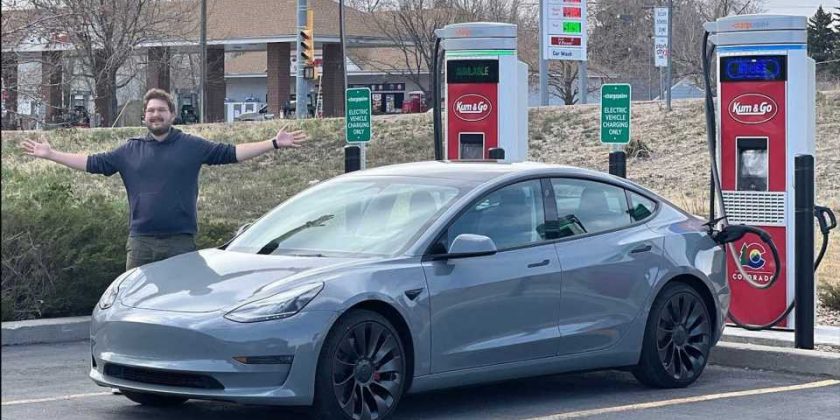In one of the latest tests, Out of Spec Reviews’ Kyle Conner checks a brand new, 2022 Tesla Model 3 Performance in a stock wheel configuration.
As usual, the car was tested at a constant speed of 70 mph (113 km/h). Kyle Conner assumed that it has about an 82 kWh battery pack, out of which about 3 kWh is a buffer, so he ran the test basically to a point at which the car’s display showed 79 kWh consumed (there could be a few “electrons” still available, but it’s not expected that a typical driver would normally go so low on state-of-charge).
The result of the trip is 280 miles (451 km), including the last miles covered around the fast charging station at lower speeds. The average energy consumption displayed by the car was 282 Wh/mile (175 Wh/km).
The achieved range happens to be lower than the 315 miles (507 km) EPA Combined range value (by 35 miles or 11%), but we always advise to check also the EPA Highway range rating, which appears to be more appropriate for the comparison.
In this case, the 2022 Tesla Model 3 Performance has an EPA Highway range of 299 miles (481 km), so the difference is 19 miles (31 km) or 6.3%.
Anyway, the range of 280 miles (451 km) is one of the best results in the 70 mph range test so far. For reference, a 2021 Tesla Model 3 Long Range AWD tested some time ago, noted 310 miles (499 km).
We are now eager to see the Tesla Model Y range tests, especially the all-new version, which is powered by the 4680-type battery cells.
Results in brief (according to the car’s display):
- 2022 Tesla Model 3 Performance, AWD, 20″ stock wheels, Pirelli P Zero tires
Mileage: 2,578 miles (4,148 km) - Speed: about 70 mph (113 km/h)
- Achieved range: 280 miles (451 km)
(the last miles at a decreased speed) - Used energy: 79 kWh used
- Energy consumption: 282 Wh/mile (175 Wh/km)
- Share on Facebook
- Share on Twitter
- Share on LinkedIn
- Share on Flipboard
- Share on Reddit
- Share on WhatsApp
- Send to email
Source: Read Full Article

